Assertiveness Without A Word
by May Bleeker, 30 July 2009 (updated 2 Aug 2012)
Assertiveness is more than just what you say and how you say it. How you carry yourself tells people a great deal about you. Projecting yourself with confidence and self esteem is a way of asserting yourself without saying anything.
Physical Billboard
Think of your body and facial expressions as your PR company. They are billboards that 'advertise' what you think and feel on a regular basis. They 'assert' who you are.
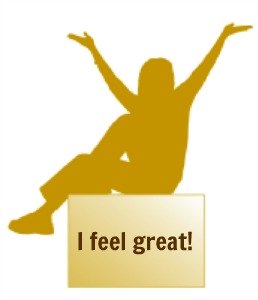
When thoughts and feelings become a habit they drop out of consciousness and become 'second nature'. This 'second nature' is expressed in your body posture, the sound of your voice, the way you make eye contact, the way you sit in a chair, how you move, and your facial expressions.
It is also expressed in the choices you make in clothes, haircuts and grooming. Your assertiveness and impact on others depends as much on these things as the messages you convey with words.
You may be totally unaware of it, but your body language may be giving away a whole lot of information about you that you'd rather keep to yourself.
It might be important to you to express your personality through your clothes and hairstyle, but regardless of what you prefer, you should be aware that your choices send a message to other people.
If you want to send a message of self confidence and assertiveness you have to express this with your body.
Examples of Physical Assertiveness (or lack thereof)
Is the tone of your voice soft and timid or squeaky? Do you mumble or speak unclearly? Is the sound of your voice grating or whining, sing-song or muffled? Are you able to project your voice across a table or room when needed?
How And Where You Sit
When you sit at a table do you slouch back, sit low or fold yourself up? Do you sit tall? Or on the edge of your seat?
When you have to sit at a table for a meeting or lunch, where do you place yourself in relation to others? What seat do you choose?
In a public forum, do you automatically sit at the back, avoiding the front seats?
How You Stand
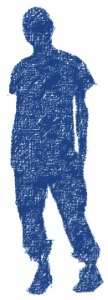
When you stand, how do you project yourself? Are you upright? Do you shift your feet around a lot? Do you move your hands around and fumble with things or touch your hair / tie / handbag / jewellery or never know what to do with your hands?
Are you undermining your assertiveness by diverting the observer's attention away from the message you are trying to convey and focusing it on your body language?
Eye Contact
Do you hesitate to make eye contact? Or when people make eye contact with you do you look away quickly / look down / stare / giggle / blush?
Flirting
Do you flirt to get your way? In more formal contexts this can sometimes be seen as juvenile or manipulative behaviour. Neither of these are assertive.
What You Wear
As regrettable as it may seem, I have definitely been given work based on the clothes I wear. How do I know this? The client told me!
In a choice between someone younger and more qualified (more degrees, not more experience), they chose me to undertake the project because they felt the other person had 'too casual' or 'too young' a style of dress. They felt she would not carry weight with an older clientele.
The person in question dressed in an attractive, but casual manner. Jeans and artsy shirts are an expression of her creative personality, which is wonderful. But it did not fit well with the professional company ethos and the image they wished to project to their clients.

Assertiveness is really not about what you wear. But when in a situation where you have to make an impact in a short space of time, your physical appearance can detract from your assertiveness by sending the wrong message.
If the audience is older and you appear too young (and therefore inexperienced), they might doubt that you know what you're talking about.
Your appearance, if too funky or casual, can cause some people to 'switch off' or put you in a box that says: 'not important enough to listen to'.
When you only have a few minutes to make an impression, what you wear and how you wear it is part of what people use to form an opinion about you. Like it or not. If you are making a public appearance as an expert, you need to bear your audience in mind and dress accordingly.
In the NGO field I often find this working in reverse. If I turn up at a community event dressed too 'corporate' people may not relate to me as well as if I dressed in a more approachable style.
This can unintentionally reinforce ideas people hold about 'people like me' (i.e. who they think I am, not who I truly am) and get in the way of the message I want to convey.
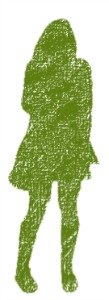
What clothes do you habitually wear? Casual, frayed jeans or a favourite worn jumper might be arty and interesting, but if you are working in a job where you meet CEO's and board members with status and expectations, unless your job is a creative one, your casual appearance might undermine your authority.
Are your clothes neat or falling apart? Clean or dirty? Buttons on or fallen off? If you work in an environment where you get grubby, do you wear your overalls in public or change into 'outdoor' clothes? Are your shoes scuffed and down at the heel or kept clean and in good condition?
How do you wear your hair? Is it neat or unruly? Tied up or left loose? Slicked back / cut close / or allowed to do whatever it wants?
What message does it send about you? Is it the message you want to send?
Perhaps your outlook is that people should accept you for who you are, regardless of what you wear. True, but they will think they know who you are based on what you look like and how you carry yourself. Even if its wrong, it still influences how they respond to you.
If you don't want them to jump to the wrong conclusion you have to manage the impression you make. Choose what you wear according to the needs of the situation. If you only have a certain type of clothing - get what you need.
You are not a static thing with only one style or one type of personality. Consider all the roles you play and how many times a day you change the way you relate to the world. Life is a stage, choose your costumes accordingly.
All these things are elements of your PR company. They all tell a story about you. Sometimes people read this story incorrectly. Mostly they 'get you' just by looking at you.
Get Feedback to See What Works for You
If you have some issues with assertiveness try to get some feedback on your body language and appearance. There may be elements of your physical 'PR' that are letting you down or decreasing your impact amongst people.
Do what you can for yourself (look in the mirror while talking on the phone, tape your voice reading a page from a magazine, listen to the sound of your voice when speaking in public).
Then get a friend or family member to help you with the rest. Make a short video of you doing a speech or presentation / moving around the room / sitting at a table, or in a straight-backed chair / talking to people in a public place.
If you spot a problem area, like slouching low in your chair, sitting on the edge, fidgeting or talking in a high-pitched or overly soft voice, ask friends and family to point out when you do it.
Try to get an idea of what you look like and sound like in various situations then compare it to the guide below.
Assertive Behaviour: How to Project Confidence
Return from Assertiveness Without a Word to Doorway to Self Esteem Home
Return to Bullying At Work (Bullying Colleague)
Related Pages
Dealing with Criticism: For the Critic
Featured Pages



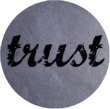

Understanding Emotions Through The Five Senses
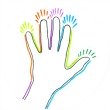
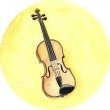

Coming Soon
Emotions & Smell
Emotions & Images




New! Comments
Your feedback is welcome: